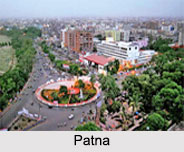 Capital cities in East India are connected with all the states in India. Some of the capital cities are developed by Muslims and British while ruling in India, while some are developed by Hindu kings of early India. Eastern Indian capital cities comprised of Kolkata, the capital of West Bengal, Bhubaneshawar, the capital city of Odisha, Patna, the capital city of Bihar and Ranchi, the capital city of tribal acquired state of India, Jharkhand. These capital cities of Eastern India have been the ruling ground for many ancient empires such as the Maurya Empire, Sunga Dynasty, Kalinga Dynasty, Sena Dynasty and Pala Dynasty. Hinduism, Islam, Christianity and Buddhism are dominant in these capital cities.
Capital cities in East India are connected with all the states in India. Some of the capital cities are developed by Muslims and British while ruling in India, while some are developed by Hindu kings of early India. Eastern Indian capital cities comprised of Kolkata, the capital of West Bengal, Bhubaneshawar, the capital city of Odisha, Patna, the capital city of Bihar and Ranchi, the capital city of tribal acquired state of India, Jharkhand. These capital cities of Eastern India have been the ruling ground for many ancient empires such as the Maurya Empire, Sunga Dynasty, Kalinga Dynasty, Sena Dynasty and Pala Dynasty. Hinduism, Islam, Christianity and Buddhism are dominant in these capital cities.
Kolkata
 Kolkata is the capital of West Bengal and the second largest city in India after Mumbai in Maharashtra. Kolkata is long known as the cultural capital of India. Kolkata continues to spawn generations of poets, writers, film producers like Satyajit Ray, Rituparno Ghosh, Tarun Majumdar and Nobel Prize winners like Rabindranath Tagore and Amartya Sen. Modern Kolkata was developed by the British East India Company after the decline of the independent Muslim rule in Bengal.
Kolkata is the capital of West Bengal and the second largest city in India after Mumbai in Maharashtra. Kolkata is long known as the cultural capital of India. Kolkata continues to spawn generations of poets, writers, film producers like Satyajit Ray, Rituparno Ghosh, Tarun Majumdar and Nobel Prize winners like Rabindranath Tagore and Amartya Sen. Modern Kolkata was developed by the British East India Company after the decline of the independent Muslim rule in Bengal.
Bhubaneswar
Bhubaneswar is the temple city of East India. It is the largest city in Odisha and is a centre of economic and religious importance in Eastern India. Although the modern city of Bhubaneswar was formally established only in 1948, the history of the areas in and around the present-day city can be traced to 1st century BC and earlier. The capital city of Odisha is known for temples like Lingaraja Temple, Rajarani Temple and Ananta Vasudeva Temple that date back a time sawing the waning of Buddhism and revival of Hinduism under the successive dynasties ruled Odisha.
Patna
Patna is the capital and largest city of the state of Bihar. Patna is the second-largest city in eastern India after Kolkata. Patna was founded in 490 BC by the king of Magadha.
Ranchi
Ranchi is the capital of the Indian state of Jharkhand. It is the industrial capital city and the third most populous city of the state. Ranchi is dotted with many tourist sports like Hundru Falls, Jonha Falls, Panchghagh Falls, Hirni Falls and Dassam Falls. Ranchi has been selected as one of the hundred Indian cities to be developed as a smart city under flagship of "Smart Cities Mission".



















